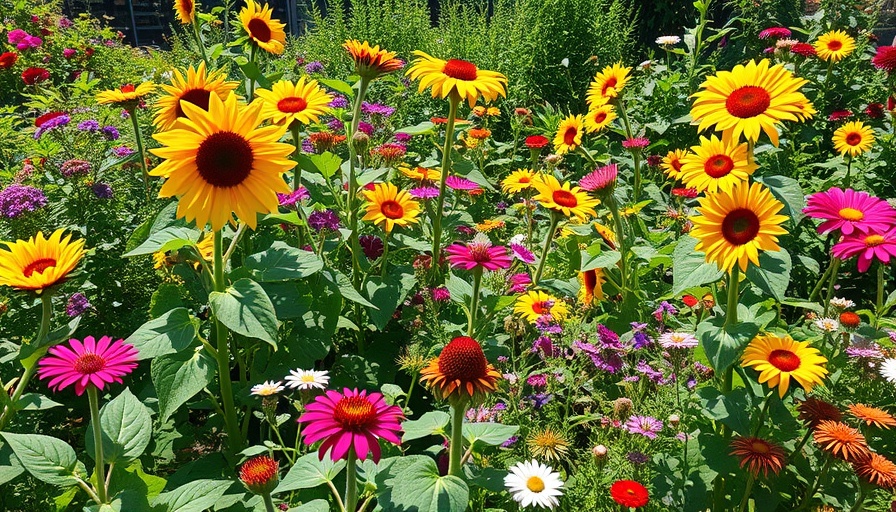
Understanding Polyculture: A Holistic Approach to Gardening
As modern gardening continues to evolve with the increasing demand for sustainable practices, polyculture gardening is taking center stage. Unlike monoculture, which isolates a single crop, polyculture celebrates the diversity of planting multiple species together. This method not only enhances biodiversity but also fosters resilience within a garden ecosystem. With the right techniques, anyone can transition their traditional gardening methods to embrace polyculture.
Polyculture vs Monoculture: What’s the Difference?
Many gardeners are familiar with monoculture—growing one type of plant in an area. This method simplifies the gardening process, allowing focused attention on one crop's needs. However, it can lead to vulnerabilities. On the other hand, polyculture, where multiple varieties are cultivated together, reaps the benefits of natural cooperation among plants. This can enhance soil quality, deter pests, and allow for a more productive harvest. By understanding the differences between these methods, gardeners can make informed decisions about their planting strategies.
Why Choose Polyculture? The Benefits Explored
Choosing polyculture over monoculture can significantly benefit your garden. It promotes a wide range of advantages:
- Biodiversity: Growing multiple species supports a more varied ecosystem, increasing soil health and preventing pests.
- Resilience: If one crop fails, others may thrive, ensuring a more stable harvest overall.
- Resource Efficiency: Companion planting helps plants support one another by utilizing different nutrients and space effectively.
These benefits reflect the age-old wisdom of nature’s design, where every plant serves a purpose.
Implementing Polyculture in Your Garden: Practical Insights
Starting with polyculture doesn’t have to be complex. You can begin with these practical strategies:
- **Companion Planting:** Select pairs of plants that benefit each other. For instance, tomatoes and basil have been shown to thrive together, improving flavors and repelling pests.
- **Succession Planting:** Grow different plants at various times to utilize garden space effectively. This minimizes gaps and promotes continuous harvests.
- **Layering:** Use vertical space to grow climbing plants alongside lower-growing ones, ensuring efficient use of sunlight and nutrients.
Consider starting small, perhaps with an herb garden that includes basil, cilantro, and parsley together—this way, you can observe how they interact while growing your culinary repertoire.
Common Misconceptions About Polyculture
There are several misconceptions surrounding polyculture that discourage gardeners from trying it:
- **Complexity:** Many believe polyculture requires advanced knowledge and skills. However, with simple principles, anyone can achieve a thriving polyculture garden.
- **Limited Plant Choice:** Some feel polyculture restricts what can be planted together. In reality, there are countless combinations that will flourish when selected thoughtfully.
Breaking down these barriers will encourage more gardeners to explore the bountiful benefits of polyculture.
Empowering Community Through Polyculture
As we look towards the future, embracing community-centric gardening practices is vital. Polyculture not only cultivates individual gardens but fosters community connections. Neighborhood gardens utilizing polyculture approaches can inspire others to join in sustainable practices, ultimately leading to healthier, stronger communities. Sharing knowledge about polyculture at local events can spark enthusiasm and a new wave of organic gardening initiatives.
Incorporating holistic approaches to gardening like polyculture allows us to connect deeper with our environment. A little patience and planning can turn your garden into a vibrant ecosystem bursting with life and flavor. So, gather your seeds and get planting—discover the beauty of diversity right in your backyard!
 Add Row
Add Row  Add
Add 




Write A Comment